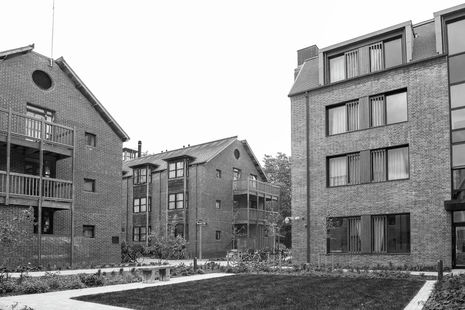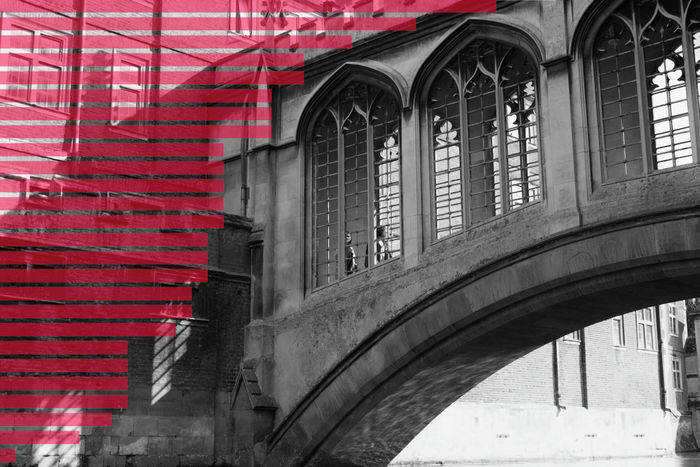Lucy Cavendish: a case study in collegiate failure
Lucy Cav’s £16million of debt has left students paying some of the highest rent in Cambridge

Of all the conclusions of Varsity’s rent investigation, particularly striking is the fact that wealthier colleges consisently offer their students lower rents. While Trinity and John’s students enjoy some of Cambridge’s most affordable accommodation, students at Girton and Lucy Cavendish are forced to shell out nearly 50% more each term.
This statistic is particularly worrying considering the fact that Lucy Cavendish recently became the first-ever Cambridge college to admit more than 90% of their UK students from state schools. The corresponding figure at Trinity is only 55%.
When announcing the college’s transformation from a mature, women-only college in 2020, Lucy Cavendish’s stated aim was “making more places available for excellent students from under-represented backgrounds”.
And though the college has undoubtedly succeeded in expanding access to Cambridge, Cambridge’s collegiate system has entirely failed Lucy Cavendish. Despite being a constituent of the UK’s second-richest university, the college is in dire financial straits.
By far Lucy Cavendish’s largest landlord is St. John’s
Since admitting male and undergraduate students for the first time, the college has struggled to find the funds to deal with an influx of over 300 students. The main college site, previously dedicated to postgraduate women, has been entirely turned over to first year undergrads.
To house the remaining new students, the college took out a series of loans to finance the construction of new student accommodation. According to publicly available records examined by Varsity, Lucy Cavendish’s debt amounted to £16 million in 2022, including an unprecedented £10 million loan from the University itself.
In the meantime, the college is forced to rent several properties off both private companies and other Cambridge colleges. Rooms in Castle Street are rented from Collegiate AC Ltd., a private provider of student accommodation, and further rooms are rented from a local theological school, Westminster College.
By far Lucy Cavendish’s largest landlord, however, is St. John’s — a college that charges its own students, on average, only two-thirds of the rent at Lucy Cav. One of the properties that Lucy Cavendish rents from John’s, Wolfson Court, was purchased off Girton College as an investment property in 2017.
The college reported a net loss on accommodation of £1.1 million in 2022
Originally Girton’s in-town satellite college, the purpose-built 90s accomodation was equipped with a bar, an MCR, a library and a 24-hour duty porter. Since being bought by John’s, however, all of these facilities have been axed due to disagreements about who should fund their upkeep, as part of the site is let out to Clare Hall.
Lucy Cav students are thus housed in a building with a locked-up library and inaccessible social spaces, now used by John’s as a storage space for disused furniture. Security and maintenance is outsourced to a private contractor; in addition, several balconies belonging to Lucy Cav students were bolted shut by John’s at short notice after structural issues with the building were discovered.
According to Lucy Cavendish’s accounts, “in most instances the college’s rental agreements [with landlords] are for 52 weeks, meaning that the college has to pay rent for the full year even when students’ licences are for shorter periods”.
As a result, the college reported a net loss on accommodation of £1.1 million in 2022.
The worst affected by Lucy Cavendish’s financial difficulties are Lucy students themselves
In theory, this loss could be offset by the ‘Colleges fund’, a nebulous system of wealth redistribution from other Cambridge colleges, which donated £1.2 million to Lucy Cavendish in 2022. However, Lucy Cav students have repeatedly been told by the University that the college is not permitted to spend this money on operational expenses, including rent subsidies.
Instead, the fund is intended to slowly grow Lucy Cavendish’s endowment – although last year, the endowment instead shrunk from £15.3 million to only £13.0. No undergraduate college has a smaller endowment; by contrast, last year John’s counted nearly a billion in net assets and registered a financial surplus of over £6 million.
Before last year, the college’s ringfenced hardship fund was worth only £17,000, and their travel grant fund was negligible. The college also previously offered some of the least affordable buttery prices in Cambridge.
Last year, however, the college was moved to substantially reduce catering prices only after students presented a research paper, explaining that unaffordable food prices made studying at Cambridge substantially harder.
In the end, the worst affected by Lucy Cavendish’s financial difficulties are Lucy Cav students, who pay higher living costs, and receive fewer subsidies, bursaries and grants than other Cambridge students, despite studying at the same inordinately rich institution.
Lucy Cavendish College was contacted for comment.
 News / Clare Hall spent over £500k opposing busway 24 December 2025
News / Clare Hall spent over £500k opposing busway 24 December 2025 Comment / The ‘class’ of Cambridge24 December 2025
Comment / The ‘class’ of Cambridge24 December 2025 News / Caius mourns its tree-mendous loss23 December 2025
News / Caius mourns its tree-mendous loss23 December 2025 Comment / Yes, I’m brown – but I have more important things to say22 December 2025
Comment / Yes, I’m brown – but I have more important things to say22 December 2025 News / Girton JCR publishes open letter expressing solidarity with Palestine25 December 2025
News / Girton JCR publishes open letter expressing solidarity with Palestine25 December 2025










